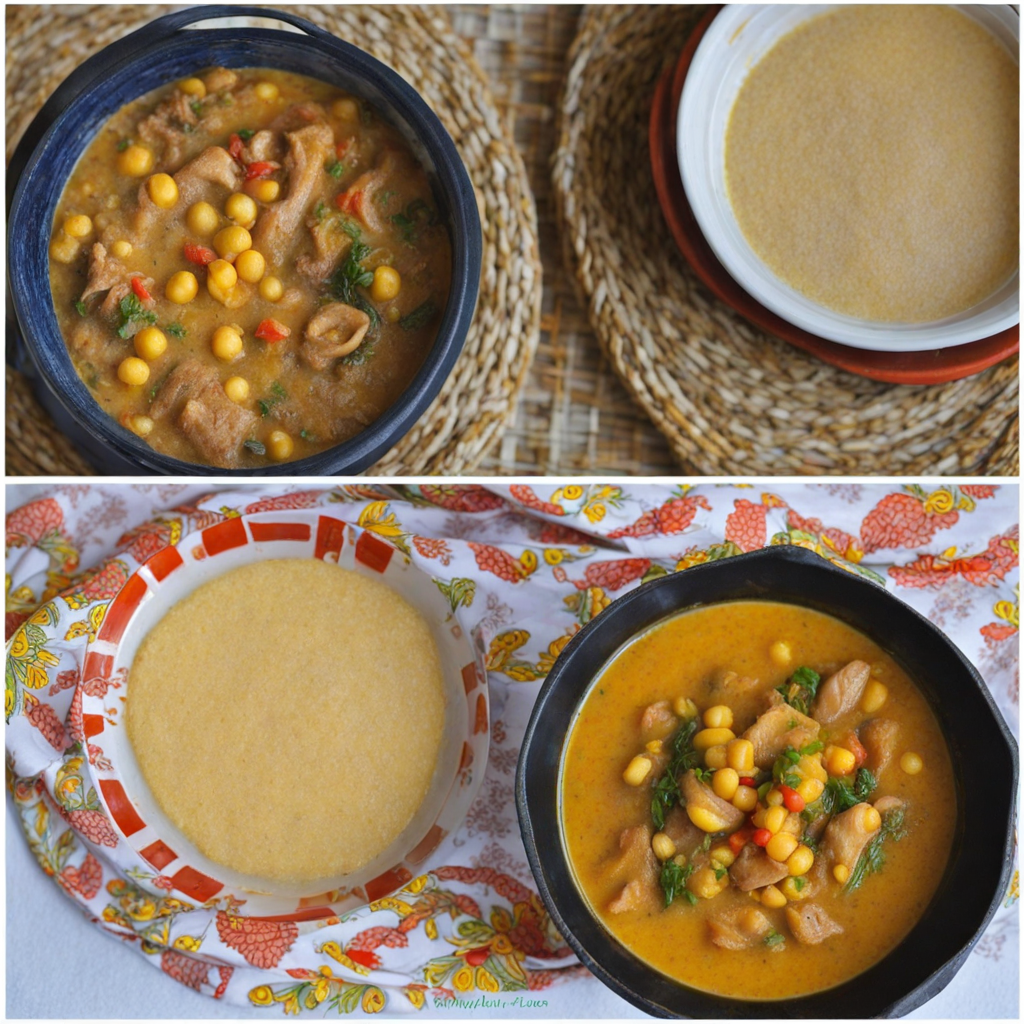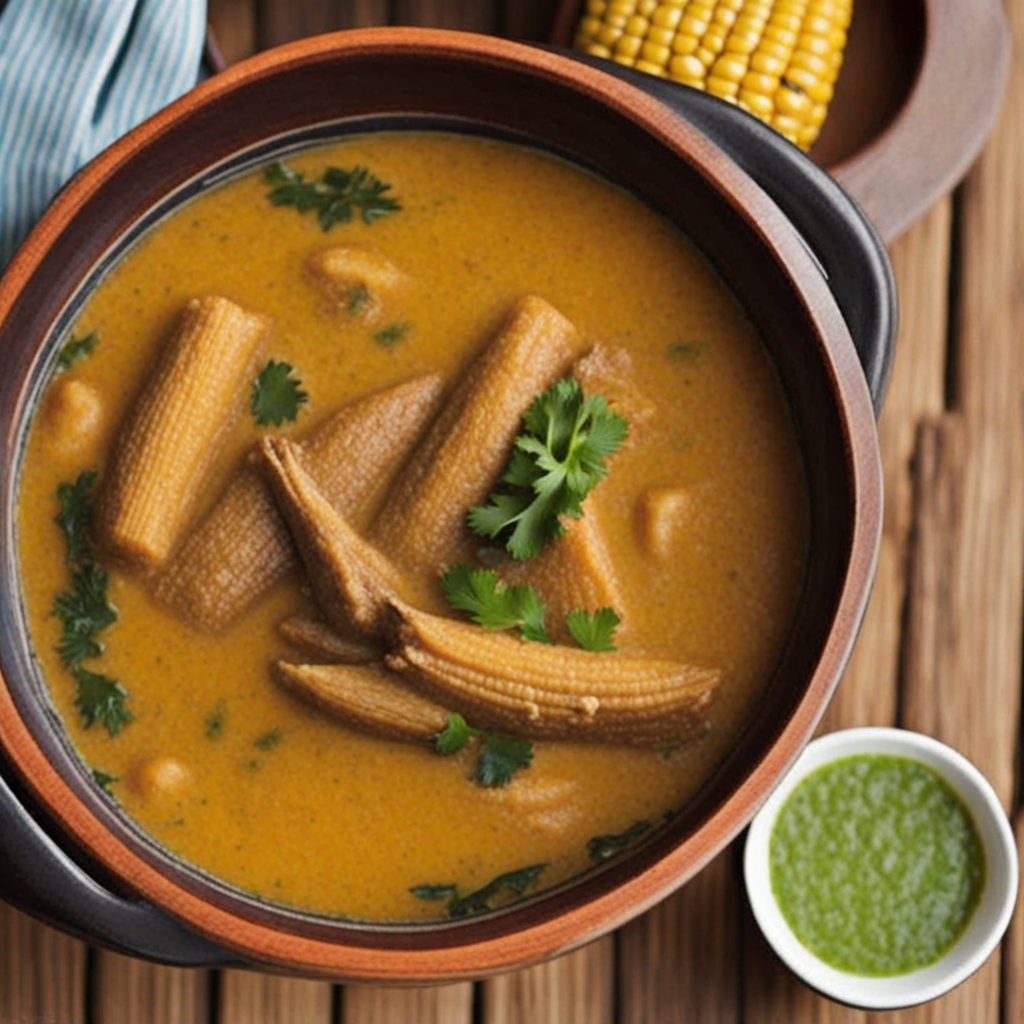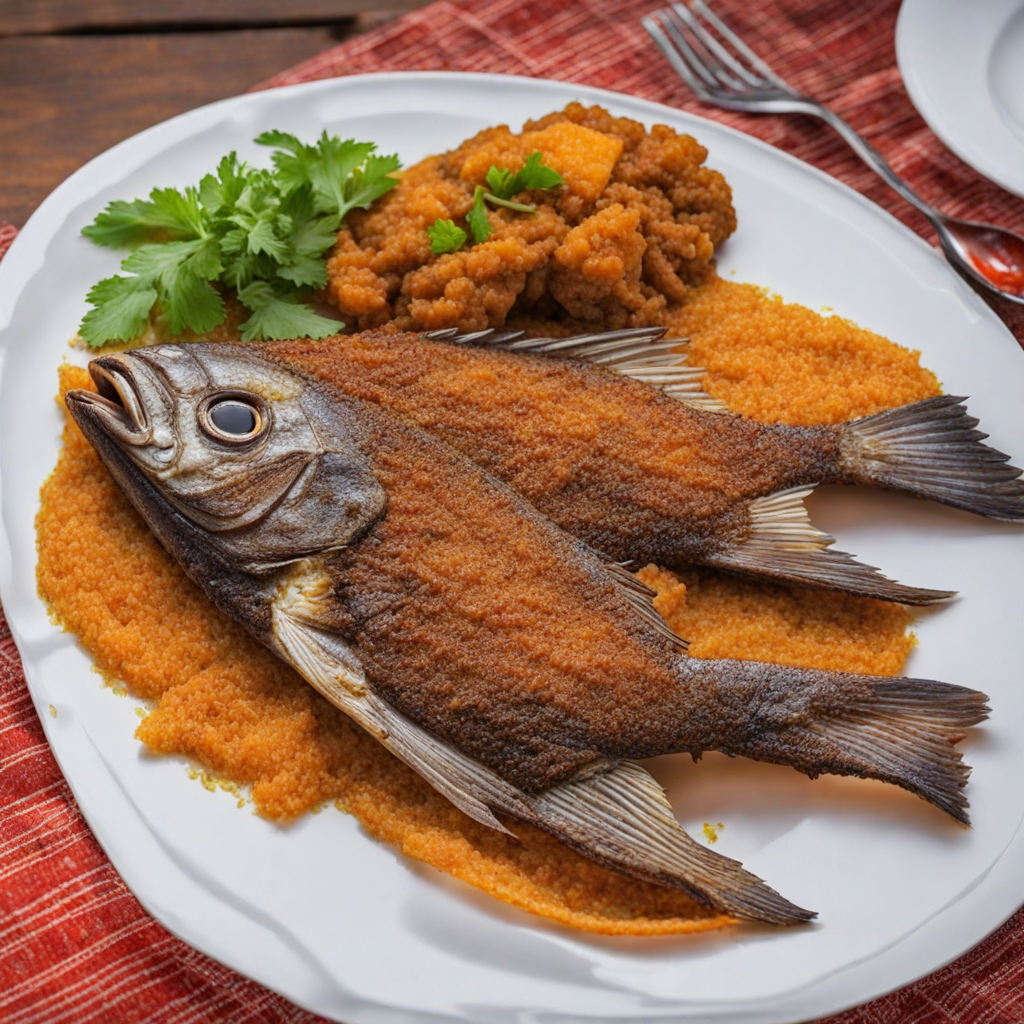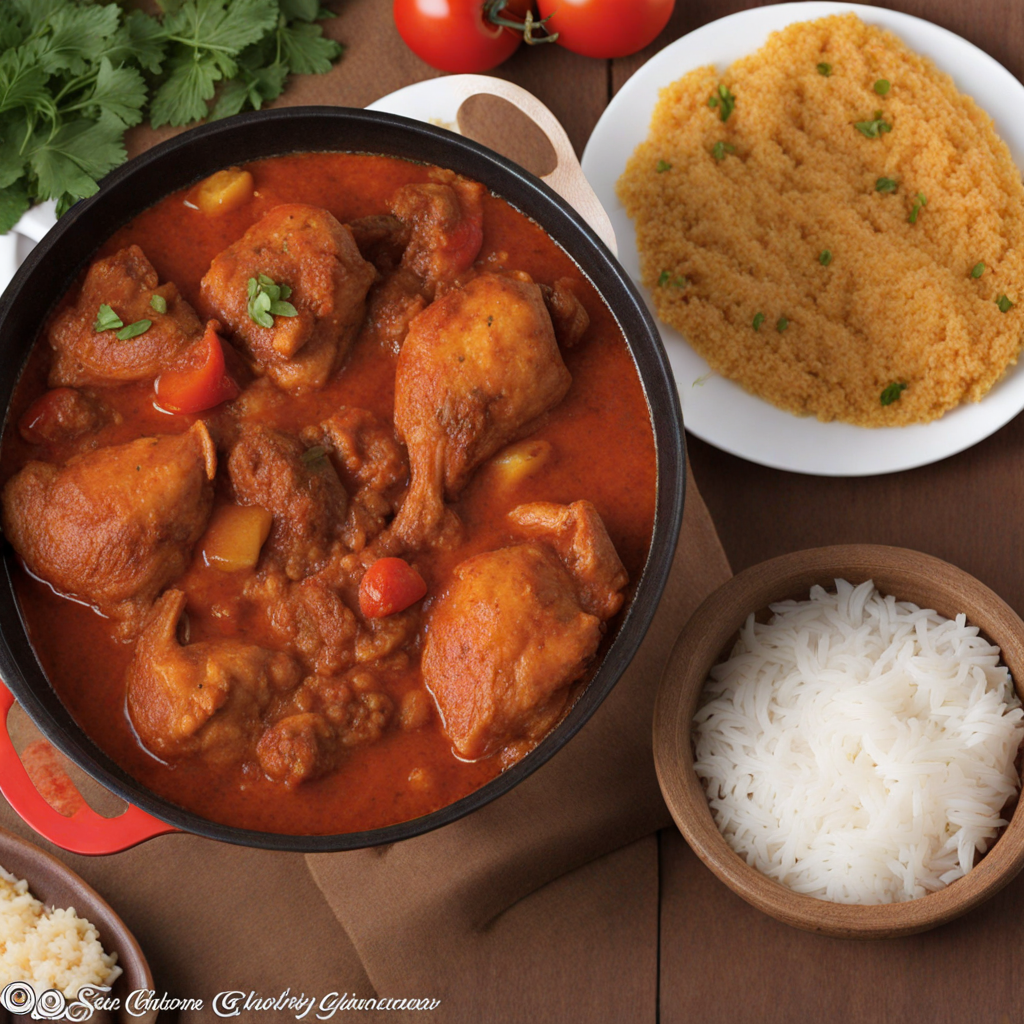Apapransa
Apapransa is a traditional Ghanaian dish that beautifully showcases the rich and vibrant flavors of West African cuisine. At its core, this dish consists of a savory combination of rice and a variety of proteins, often featuring chicken or fish, simmered in a flavorful blend of spices, tomatoes, and onions. The dish is typically prepared by cooking the rice in a spiced broth, allowing it to absorb the rich flavors of the ingredients, resulting in a hearty and satisfying meal that is both filling and aromatic.
The unique taste of Apapransa is achieved through the use of local spices such as ginger, garlic, and chili peppers, which add depth and heat to the dish. The addition of vegetables, such as bell peppers and carrots, not only enhances the nutritional value but also contributes vibrant colors to the final presentation. This festive dish is often enjoyed during special occasions and family gatherings, making it a beloved staple in many Ghanaian households.
How It Became This Dish
The History of Apapransa: A Culinary Gem of Ghana Introduction Apapransa, a beloved Ghanaian dish, encapsulates the rich culinary heritage of the Akan people, particularly among the Asante. This dish, often made with rice and a variety of local ingredients, is not only a staple in many Ghanaian households but also a reflection of the cultural practices and historical narratives of the region. To understand Apapransa, we must delve into its origins, cultural significance, and how it has evolved over time. Origins of Apapransa Apapransa, sometimes referred to as "apapransa" or "apapran," is traditionally prepared using rice—an ingredient that has become a staple in West African diets. Rice was introduced to Ghana through trade routes from Asia and the Middle East, likely arriving in the region before the 15th century, though its popularity soared during the colonial period. The word "apapransa" itself is derived from the Akan language, where "apa" means "to mix" and "pransa" refers to "rice." Thus, the name literally translates to "mixed rice." The dish is primarily characterized by its combination of rice, meat or fish, and a variety of vegetables, often cooked in a rich tomato-based sauce. The preparation of Apapransa is tied to the agricultural practices of the Akan people. Traditionally, women were responsible for farming, and they would use locally sourced ingredients to create nutritious meals for their families. The versatility of Apapransa allowed for the inclusion of seasonal vegetables and protein sources, reflecting the agricultural bounty of the region. Cultural Significance In Ghana, food is deeply intertwined with culture, identity, and social practices. Apapransa is not merely a meal; it is a communal experience, often served during family gatherings, celebrations, and festivals. The preparation and sharing of Apapransa can be seen as an act of hospitality, reinforcing social bonds among family and friends. The dish is particularly significant during traditional celebrations, including weddings and naming ceremonies. In these contexts, Apapransa symbolizes abundance, prosperity, and unity. The communal aspect of sharing the dish represents the interconnectedness of the community, as individuals come together to celebrate milestones and express gratitude. Moreover, Apapransa holds a special place in the culinary practices of the Asante people. Asante culture places great emphasis on the importance of food in rituals and ceremonies. For instance, during the Asantehene's annual Akwasidae festival, Apapransa is frequently featured as part of the feast, underscoring its role in cultural identity and heritage. Development Over Time As Ghanaian society has evolved, so too has the preparation and consumption of Apapransa. The introduction of modern cooking methods and the globalization of food have influenced the ways in which this traditional dish is prepared and enjoyed. While the core ingredients remain consistent, variations have emerged, reflecting changes in lifestyle and dietary preferences. With the increase in urbanization and the rise of fast-paced lifestyles, many Ghanaians have adapted traditional recipes to suit contemporary needs. Instant rice and pre-packaged sauces have made it easier to prepare Apapransa quickly, allowing busy families to enjoy this traditional meal without spending hours in the kitchen. However, with modernity comes a challenge: the preservation of culinary traditions. There is a growing concern among food historians and cultural enthusiasts about the potential loss of traditional recipes and cooking methods. In response, initiatives have emerged to promote the importance of traditional foods like Apapransa, often emphasizing the need to educate younger generations about their culinary heritage. Social media platforms and culinary blogs have also played a significant role in revitalizing interest in traditional Ghanaian cuisine. Home cooks and professional chefs alike share their versions of Apapransa, showcasing regional variations and unique twists on the classic recipe. This digital sharing allows the dish to transcend borders, reaching Ghanaian diasporas and food enthusiasts worldwide. Regional Variations Apapransa is not a monolithic dish. Variations exist across Ghana, reflecting regional ingredients, cooking styles, and cultural influences. For instance, in the Volta Region, Apapransa may incorporate local fish or tubers, while in the Northern regions, it may be served with groundnut stew or spicy pepper sauces. Additionally, the method of preparation can differ. While some households may prefer a more elaborate version of the dish, including a variety of meats and vegetables, others may opt for a simpler approach, focusing on basic ingredients to create a comforting meal. This adaptability is a testament to the dish’s resilience and enduring popularity. Apapransa in Contemporary Ghana Today, Apapransa continues to be a cherished dish in Ghanaian homes and restaurants. Its presence on menus in local eateries and high-end restaurants alike signifies its status as a staple of Ghanaian cuisine. Chefs are increasingly experimenting with Apapransa, incorporating international ingredients and techniques while maintaining its traditional essence. Furthermore, the rise of culinary tourism in Ghana has brought renewed attention to traditional dishes like Apapransa. Tourists seeking authentic experiences are drawn to cooking classes and food tours that highlight the preparation of local foods, allowing them to engage with the culture on a deeper level. The global interest in African cuisine has also played a role in elevating dishes like Apapransa on the world stage. As chefs from Ghana gain recognition internationally, they often showcase traditional dishes, helping to foster appreciation for Ghanaian culinary traditions. Conclusion Apapransa is more than just a dish; it is a symbol of Ghana's rich cultural heritage, communal values, and evolving culinary practices. From its origins among the Akan people to its contemporary adaptations, Apapransa reflects the historical narratives and agricultural practices of the region. As Ghanaians continue to celebrate and innovate within their food traditions, Apapransa remains a cherished part of their identity—one that nourishes both body and spirit. The dish is a testament to the resilience of culture and the enduring power of food to bring people together, transcending time and place.
You may like
Discover local flavors from Ghana







